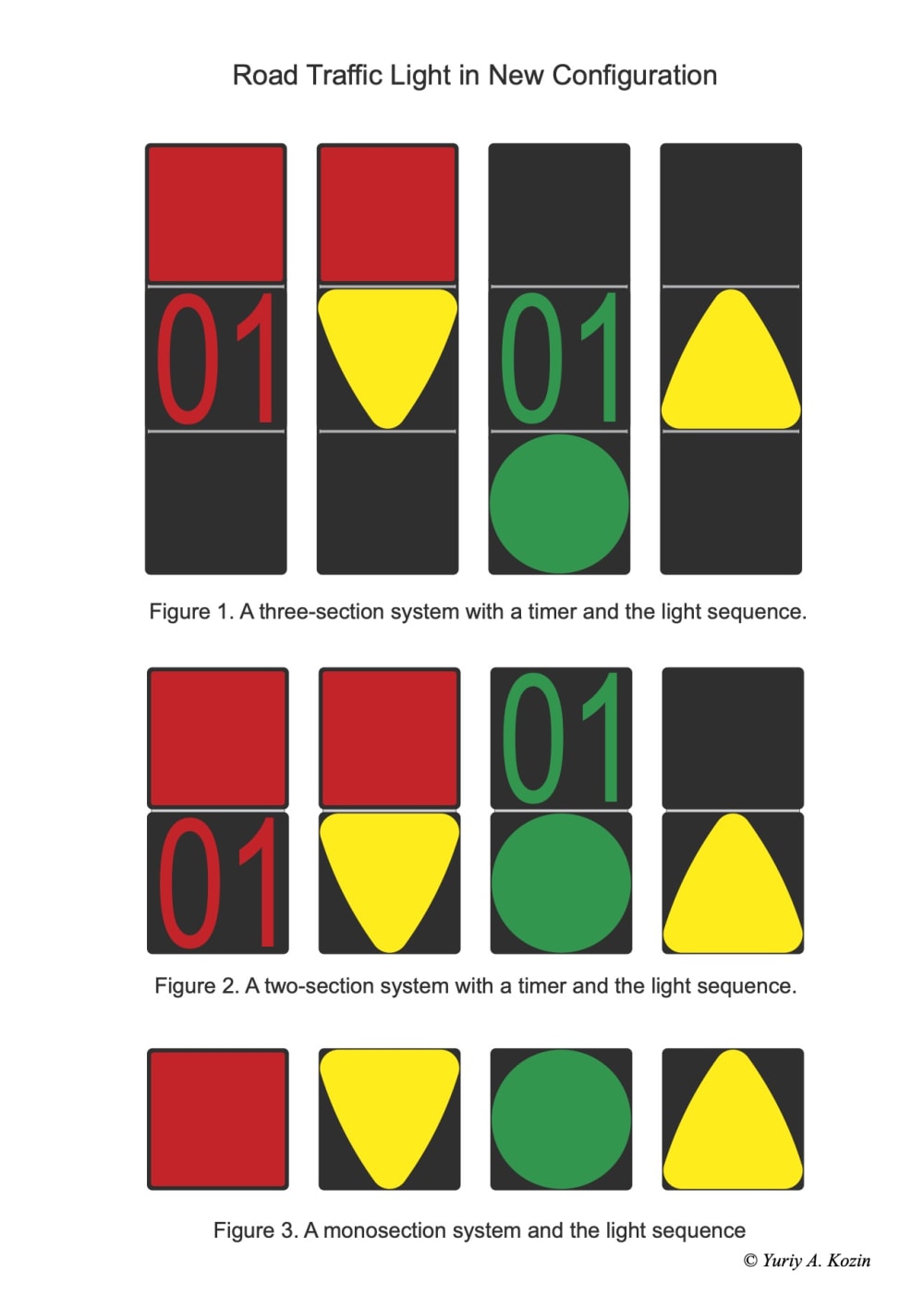The three-color system containing signals of the same circular shape has been in existence for over a hundred years. Each traffic signal has been justifiably selected to have a special color light to correspond to human psycho-emotional reaction (red – stop, yellow – caution, green – go) to a given color signal.
The main downsides of the traditional road traffic light include the following:
- The uniform circular shape of light signals results in uncertainty and difficulties for road users with color blindness and visual impairments, resulting in the need for restrictions or bans on driving license issuance in some countries. This uncertainty becomes particularly acute in conditions of low visibility.
- According to the concept of harmony of form and color, a green light alone corresponds to the circular (spherical-like) shape of the signal. Red and amber lights harmoniously combine with other geometrical shapes.
- The uniform shape of light signals prevents the implementation of the original compact combined model of traffic lights. For example, during the day, colorblind people can tell which signal is which because there is a standard position assigned: top – bottom or right – left. This becomes problematic if the compact combined models of traffic lights are used.
While retaining the color, position and signal sequence of the current configuration, it is possible to produce a traffic light where the shape of each signal corresponds to its color (such correspondence is theoretically justified). The red light signal has a square shape and the amber light signal has a triangular shape with its apex pointing to the signal (green or red) that is about to appear. The green signal retains its circular shape. A traditional three-section system may be used (Figure 1).
The basic three-section model of proposed traffic light may be transformed. A more compact and economical traffic light – two-section (Figure 2) or one-section (Figure 3) system – may be used, for example, in urban environments in order to increase the field of view and reduce street visual pollution.
The functions of the red, amber, green arrows and additional green arrows of the conventional traffic light are unchanged, but their design can be stylized to match the new configuration.
The newly proposed traffic light configuration provides the following advantages:
- Social advantages and safety: The differently shaped lights may remove ambiguity for people with color perception disorders (color blinders) and those visually impaired. This may allow lifting restrictions/bans on driving license issuance currently applied to them in some countries.
- Information benefits and safety: The apex of the amber triangle markedly signaling the forthcoming (red/green) light signals allows road users to anticipate the control signals in advance. Information uncertainty of traffic light signals of the same circular shape is eliminated.
- Ecological aspect: Сompact traffic lights (two-section or one-section system) reduce street visual pollution.
- Economic advantages: Manufacturing, installation and maintenance of compact traffic light in comparison with traditional three-section model is more cost-effective (reduced material intensity, size, transportation costs, etc.).
Video
Like this entry?
-
About the Entrant
- Name:Yuriy Kozin
- Type of entry:individual

